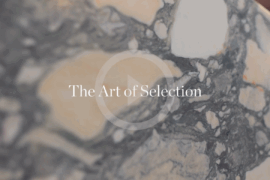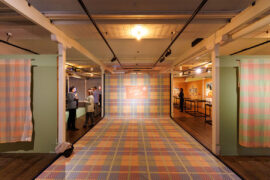Last month, prominent architects from around the world were at the seventh 361° Conference in Mumbai to discuss the topic of “Architecture and Identity”. Here’s what went down.

March 26th, 2014
A kaleidoscopic view of ‘identity’ and its meaning in architecture were presented by an assortment of speakers at this year’s 361° Conference, held at the Nehru Centre in Mumbai, India. They included Dr BV Doshi from India, William JR Curtis from France, Aniket Bhagwat from India, Héctor Fernández Elorza from Spain, Dominic Sansoni from Sri Lanka, Kashef Chowdhury from Bangladesh, Channa Daswatte from Sri Lanka, and Lars Müller from Switzerland, just to name a few.

Dr BV Doshi delivering his lecture
The focus of the conference was on people and practices whose work and philosophy take a stand on architecture and identity within the context of their region and to that end, to introduce the delegates to issues like history, politics, economics, religion, principles, methods, sociology, landscape, conservation and environment across a spectrum of scales and contexts.

William JR Curtis (left) and Dr BV Doshi (right) engaged in an intense dialogue
Marking the opening of the three-day consortium, Padmashree Balkrishna Doshi – an icon of post-independence Indian architecture – discussed the ideas of spontaneous place-making and its expanse beyond the physical attributes of any place. Following the presentation, architectural critic, academic and historian William JR Curtis joined him on stage in an interesting debate with animated inputs from both the speakers. “Transcending cultures between nations” as Curtis put it, his presentation spanned through timespans, tracing identity through history, community and individual beliefs giving a brief account on the historic architecture of Gujarat and the works of Louis I Kahn and Le Corbusier.

Sanjeev Panjabi from SPASM DESIGNS (India) delivering a lecture on the concluding day of the conference
Aniket Bhagwat, in his charismatic discourse, touched upon the multiplicity of Indian identity and his philosophical interpretation through his own works saying, “India has too much history and our architecture is often conversations with this history,” while Héctor Fernández Elorza spoke of the strength of centred concepts and subtle material interventions in architecture with selected works of his one-man practice.

(From Left) Channa Daswatte, William JR Curtis, Dominic Sansoni, Kashef Chowdhury, Aniket Bhagwat and Hector Elorza at the first open mike session
From Sri Lanka, Channa Daswatte reflected on “memory in architecture”, and “design as a part of landscape” and vice-versa, defining architecture as an assimilation of “contextualism and the anticipated choices of the occupants.” Kashef Chowdhury of Bangladesh, a former Aga Khan recipient and founder of architectural studio URBANA elaborated on spirituality as the core of religious architecture, simplicity as the essence of social spaces and relevance to the place and function as the key to building spaces that resonate their spirit, in a poetic recital on contemplative regionalism.
As an apt closer to the event, testimonies of Emre Arolat of Turkey and Carin Smuts of South Africa, gave insights into the socio-economic and political constructs of their nations and a perspective of architecture as a ‘tool to aid’ growth and development, rather than a mere iconic statement.
One of the oldest forums for architecture and design in India, the 361° Conference was established by Indian Architect & Builder in 2005 to initiate a thought-exchange on relevant ideas in architecture and critical concerns of the discipline and thus, create a relevant and serious platform for dialogue on architecture in India. Now in its seventh iteration, the conference has to date hosted more than 165 speakers from around the world.
361° Conference
361degrees.net.in
INDESIGN is on instagram
Follow @indesignlive
A searchable and comprehensive guide for specifying leading products and their suppliers
Keep up to date with the latest and greatest from our industry BFF's!

Sydney’s newest design concept store, HOW WE LIVE, explores the overlap between home and workplace – with a Surry Hills pop-up from Friday 28th November.

Merging two hotel identities in one landmark development, Hotel Indigo and Holiday Inn Little Collins capture the spirit of Melbourne through Buchan’s narrative-driven design – elevated by GROHE’s signature craftsmanship.

In an industry where design intent is often diluted by value management and procurement pressures, Klaro Industrial Design positions manufacturing as a creative ally – allowing commercial interior designers to deliver unique pieces aligned to the project’s original vision.
The internet never sleeps! Here's the stuff you might have missed

CDK Stone’s Natasha Stengos takes us through its Alexandria Selection Centre, where stone choice becomes a sensory experience – from curated spaces, crafted details and a colour-organised selection floor.

At the National Wool Museum, a new exhibition traces the evolution of Godfrey Hirst and its long-standing role in shaping Geelong’s industrial and design identity.